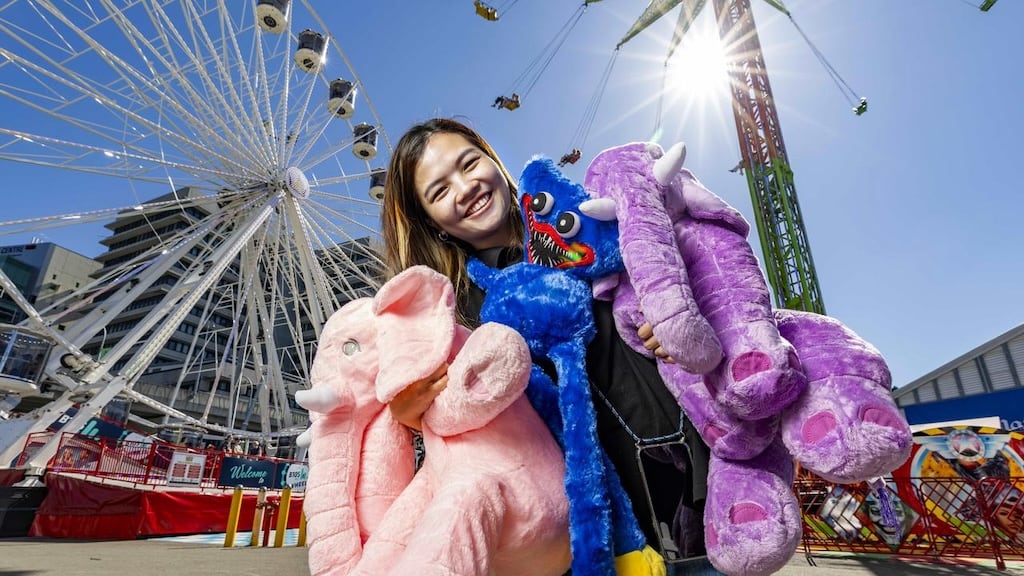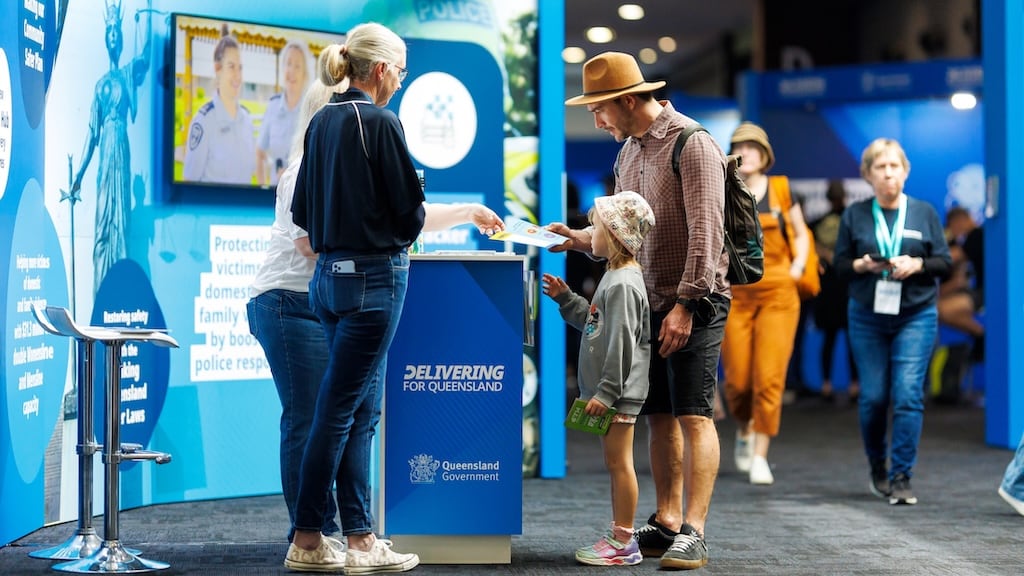Where the City Meets the Country: The Unifying Spirit of the Ekka
The Royal Queensland Show (Ekka) in Australia is more than just a fair; it is a foundational pillar of Queensland's identity, serving as the largest and most passionately attended annual event in the state. Staged every August at its historic home, the Brisbane Showgrounds in Bowen Hills, this nine-day spectacle fulfils a vital cultural mandate: to bridge the divide between Australia's bustling urban centres and its crucial rural and agricultural heartland.
Attracting over 400,000 visitors, the Ekka is an essential showcase of quality, innovation, and achievement across the primary industries of food, fibre, and foliage. The event manages to balance high-stakes agricultural competition with world-class entertainment, creating a unique atmosphere of tradition, excitement, and memory-making for families across generations. The sheer scale of the Ekka requires sophisticated logistical planning, but the rewards are a profoundly memorable Australian experience.


Historical Background
The rich history of the Ekka is intrinsically tied to the genesis of Queensland as an independent state. The event's origin lies in the formation of the National Agricultural and Industrial Association of Queensland (NAIAQ), the precursor to the current organizing body, the Royal National Agricultural and Industrial Association of Queensland (RNA). This association was formally established on August 13, 1875, by a group of prominent citizens who recognized the need for a unified platform to represent Queensland society's diverse facets.
The first event, "The Intercolonial Exhibition of 1876," was an immediate cultural phenomenon. Held in August 1876 at Bowen Park (now the RNA Showgrounds), it drew 17,000 attendees on its opening day alone, a staggering number considering Brisbane's total population was only 22,000 at the time. Locals considered this first exhibition the most important event since Queensland's separation from New South Wales in 1859.
This powerful sentiment demonstrates that the Show was deeply linked to the state's need to assert its distinct economic and cultural identity, providing tangible proof of its viability and industrial capacity. The event was formally granted the 'Royal' prefix by warrant from His Majesty King George V in 1921, formally establishing the "Royal Brisbane Show," which later evolved into the Royal Queensland Show (Ekka) in Australia. However, the ubiquitous and affectionate use of the name 'Ekka'—a colloquial contraction of 'Exhibition'—continues to demonstrate the popular, community-driven ownership of the event.
The Show's deep societal resilience is highlighted by its nearly continuous run since 1876, with only four cancellations in its history. Interruptions occurred in 1919 (Spanish Flu pandemic, when the grounds served as a hospital), 1942 (World War II, when the site was used as a military staging depot), and more recently in 2020 and 2021 (due to the COVID-19 pandemic). This historical repurposing of the Showgrounds underscores their vital role as critical civic infrastructure, flexible enough to serve the state during both national crises and major community projects, such as its planned use as a hub for the Brisbane Olympics in 2032.
Typical Activities
The Royal Queensland Show (Ekka) in Australia successfully merges serious agricultural competition with high-energy family entertainment. At its core, the Show is the state's premier competitive platform, attracting over 21,000 entries across various categories.
One of the top activities during the Royal Queensland Show (Ekka) is the Stud Beef competition, which holds international prestige as the largest annual showing of stud beef in the Southern Hemisphere. This not only confirms the Show's economic standing but provides a critical platform where industry standards are set and the state's best agricultural genetics are showcased and traded. Beyond beef, the Show features a menagerie of nearly 10,000 animals, including dairy goats, cats, dogs, and poultry, and hosts events like Horse Competitions, Sheep Dog Trials, and the popular Animal Nursery, which offers families hands-on interaction with baby animals.
The Woodchop Arena is home to a deeply rooted and highly professionalised traditional event. Far from a simple exhibition, the woodchopping and sawing competitions are high-stakes sports that attract elite competitors from across Australia, competing for a collective prize pool exceeding $140,000. Disciplines like Underhand, Standing Block, and Tree Felling require immense strength, precise technique, and core stability. This significant investment ensures these specialized traditional skills are not just preserved but elevated to elite competitive status.
In the evening, the Main Arena transforms for EkkaNITES, one of the most anticipated parts of the Show. This nightly spectacle, which begins around 6:30 PM, features live music, breathtaking stunts, thrilling horse action, and high-octane motorbike riders. The evening climaxes with a massive fireworks display, requiring a payload of nine tonnes of fireworks annually.
Furthermore, visitors flock to Sideshow Alley, the primary carnival zone that houses the large, thrilling rides and the famous Showbag Pavilion. Value-seeking patrons take advantage of the daily ride "happy hour" (9:30 AM to 10:30 AM) which offers two rides for the price of one, a measure that strategically disperses early morning crowds away from the entrance gates. Other cultural events, such as the Australian Whipcracking Championships and the Natural Fibres Fashion Parades, round out the diverse entertainment offerings.
Traditional Customs
The most beloved and enduring Traditional customs in Australia associated with the Ekka revolve around its distinct culinary staples and recognition programs.
The Strawberry Sundae is, without a doubt, the Show's most iconic and beloved food item. Introduced in 1950, this confection has evolved into a powerful symbol of Queensland produce and charitable giving. Since 1989, the RNA has partnered with the Prince Charles Hospital Foundation to sell these sundaes, with all proceeds directed toward critical medical research.
This unique philanthropic model encourages what amounts to charitable consumption, forging a strong emotional and social connection for visitors. Annually, over 190,000 Strawberry Sundaes are consumed, each one precisely constructed with vanilla ice cream, copious amounts of chopped and chunky Queensland strawberries, whipped cream, and finished with a whole strawberry on top.
The second essential staple is the Dagwood Dog (sometimes called a Pluto Pup or Corn Dog), which debuted around the early 1950s. The simultaneous arrival of the Dagwood Dog and the Strawberry Sundae post-WWII symbolises a cultural blending—the incorporation of global carnival culture with the local celebration of agrarian success. Consumption data indicates that over 150,000 Dagwood Dogs are eaten each year.
Beyond these two giants, the culinary experience serves as a direct reflection of the agricultural excellence celebrated in the judging halls. Visitors consume over 37,000 cheese toasties (a nod to the dairy competitions) and nearly 12,000 servings of award-winning steaks and lamb tasting plates, ensuring a direct economic link between the farm-gate competition and the visitor's plate.
A key non-culinary tradition is the Queensland Country Life Showgirl Awards. Running since 1983, this program focuses on recognizing and developing young female leaders who represent the "heart and soul of rural and regional Queensland." This tradition reinforces the RNA's mission to cultivate future regional leadership and ensures the vital connection between city and bush communities remains strong. These distinct culinary and leadership Traditional customs in Australia define the Ekka's unique character.
What to Expect
A successful visit to the Royal Queensland Show (Ekka) in Australia requires careful strategic planning, particularly concerning transport, ticketing, and crowd management.
Firstly, ticketing is strictly managed: tickets are only available for purchase online via the Ekka website, and critically, no tickets are sold at the gate. This mandatory online system provides the RNA with essential advance data for crowd forecasting, which is vital for managing security and staffing on peak days. Given the Show's massive attendance figures, the Queensland government offers a significant incentive to mitigate congestion around the inner-city Showgrounds: public transport fares on the Translink network are reduced to just 50 cents across all zones and modes for the duration of the event. Furthermore, the Exhibition Station is confirmed to be open, facilitating easy rail access to 600 Gregory Terrace.
Visitors must also be aware of the "People's Day Paradox." The Royal National Agricultural Show Day, known locally as People's Day, falls on the Wednesday and offers the event's most historical atmosphere, including the Grand Parade. However, it is also the busiest period, often attracting over 50,000 people. Visitors seeking a less overwhelming experience are strongly advised to schedule their trip for a weekday, with Tuesday and Thursday being traditionally quieter days for a slower, more deliberate exploration of the Animal Nursery and food options.
Safety and accessibility are high priorities. Upon arrival, it is a recommended insider tip to visit the Ekka Police Station marquee on Gregory Terrace to obtain free ID bands for children, a proactive measure for rapid reunification in case of separation. For those with sensory needs, the RNA actively manages the high-density crowds by recommending designated low-sensory areas and quiet retreats.
These areas include the dedicated Woodchop Arena, the Ag Education Hall, and the John Macdonald Stand, which offers shaded seating to watch Main Arena events. Strategic use of the key-operated lockers outside the Showbag Pavilion is also recommended to store purchases and avoid carrying heavy bags all day, enhancing the overall comfort and enjoyment of the experience.


Conclusion
The Royal Queensland Show (Ekka) holds an indelible place as a profound cultural cornerstone, going far beyond the scope of a typical regional fair. Its continuous run since 1876 makes it a living document of Queensland's history and values. The Royal Queensland Show (Ekka) in Australia perfectly executes its mission to connect the city and the bush, not only by hosting the Southern Hemisphere's largest annual stud beef showing but by weaving in social responsibility, exemplified by the iconic Strawberry Sundae sales that fund medical research.
The blending of high-stakes agricultural competitions, the adrenaline rush of the carnival zones, and the rich tradition of the Showgirl Awards ensures that the Ekka remains a unique, vibrant, and necessary part of the Queensland calendar. Officially recognized as one of the Q150 Icons of Queensland, the Ekka continues to preserve agricultural heritage and define childhood memories.
We invite you to experience this powerful tradition, explore the diverse agriculture, and join the hundreds of thousands of others who make the journey to the Brisbane Showgrounds each August.